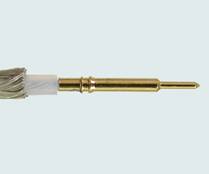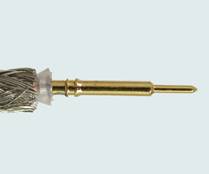Soldering Tips
What to look for in your Soldered Connection
Connections More Vital Than Ever
Today, a flawed coaxial connection can severely reduce performance on digital systems like ThinNET (EtherNET), Wireless networks like WiFi and WLAN's and high-end video like SDTV, DTV and HDTV. Where just a few years ago a poorly installed CCTV connector might have yielded a 1dB or less loss on a CCTV system, the same bad connection can now yield a 10dB loss on a > 1GHz system. That could mean that only about a third of the signal would get through the connection.A coaxial cable's center conductor is usually made up of stranded or solid wire. Because this center conductor is the primary signal path of any coaxial system, the connector's contact becomes an extension of this path when it is attached.
Although the solder fabrication method is considered more labor-intensive, performed properly, it is one of the most reliable connections and can be used on cable with solid or stranded center conductors
Read our full article: Crimp vs. Solder vs. Compression: Pros and Cons
This is what you want to look for in your soldered connections.

PREFERRED
- Solder around joint is smooth and shiny
- No evidence of solder flow outside joint region
- Solder hole is filled flush with outside pin surface

NONCONFORMING
- Visible braid indicates solder fill less than 75% minimum
- Cavity changes contour of pin. Electrical will be affected

NONCONFORMING
- Excess solder flow onto body of pin
- Excess solder changes contour of pin. Electrical will be affected

PREFERRED
- Dielectric shows clean 90 degree stripping. No evidence of melting

NONCONFORMING
- Dielectric melted past OD + 20% maximum
- Flare of dielectric will interfere with assembly
- Pin has melted into dielectric. Pin will not meet interface
